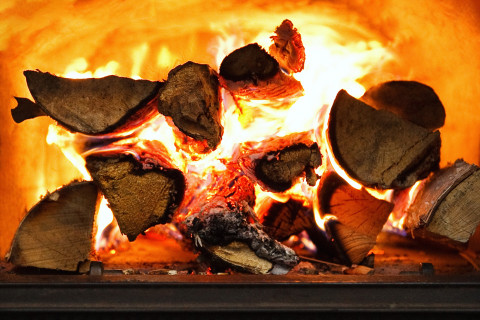The constrained use of fossil fuels for energy production and the growing demand for renewable energy are the main targets for addressing climate change. Climate change policy remains steadily focused on reducing greenhouse gas emissions via several approaches, such as pricing carbon, increasing renewable energy needs and boosting energy efficiency. An alternative approach for constraining emissions that are produced by fossil fuels is increasing biomass utilization for energy supply. However, biomass combustion produces substantial fine particulate matter (PM1) emissions, especially in small-scale units that are operated with poor-quality fuel under poor combustion conditions and with no flue gas control system.
Fine particles that are emitted into the ambient air influence radiative forcing and negatively impact health. Therefore, the effective mitigation of particle emissions from residential combustion units is possible by establishing emission limit values for small-scale combustion and/or utilizing secondary flue gas cleaning technologies. The primary objective of this thesis was to evaluate the potential application of a novel heat exchanger system to fine particle reduction in small-scale wood combustion appliances. The heat exchanger system included two types of emission abatement equipment, namely, a condensing heat exchanger and a sonic shield charger, where the fine particles were retained mainly by thermophoretic and electrostatic forces. The physicochemical fine particle emissions from a 40-kW boiler that was equipped with a heat exchanger system were studied and compared to the fine particle emissions from a commercial firetube boiler. The second main objective was to compare the physicochemical properties of gaseous and fine particle emissions (dp < 1 μm) from continuous and batch combustion appliances. In continuous combustion, the fine particle emissions were in the range of 15-23 mg/MJ when combusting pellets and wood chips. The chemical composition of the fine particles was dominated by K, Na, and S. In addition, the PM1 that was obtained from the biomass combustion was enriched with elements, such as Cl and Zn. The PM emissions were composed mostly of alkali metals, which is one of the features that enabled the realization of efficient combustion. The fine particle emissions from the batch-wise combustion of softwood (spruce) and hardwood (beech and birch) were in the range of 49-90 mg/MJ. The spruce combustion generated the lowest PM1 emissions in comparison to hardwood combustion. The dominant fractions of fine particle matter from spruce combustion were elemental carbon (~50% of the total PM1 mass), organic carbon and inorganics (Na, Zn, Fe and K). The fine particle emissions from modern boilers were moderate in comparison to batch-wise combustion in a masonry heater; however, to further minimize the PM1 emissions, secondary measures were investigated. The use of a condensing heat exchanger decreased PM1 by 40% in comparison to a conventional boiler. The integrated condensing heat exchanger and shielded corona charger system realized an 82% PM1 emission reduction efficiency in comparison to a conventional boiler. The highest PM1 reduction efficiency was 88%, which was realized by a shielded corona charger vs. a conventional boiler. Fine particle emission reduction in small-scale wood combustion appliances is important and is becoming even more relevant due to the establishment of more stringent emission limits by the ecodesign directive.
Therefore, emission abatement technologies and their applications in various small-scale combustion units should be further investigated, as they might provide a cost-feasible and efficient alternative for the adjustment of available boilers or stoves.
The doctoral dissertation of MSc Julija Grigonyte-Lopez Rodriguez, entitled Reduction of fine particle emissions from small-scale wood combustion using a novel heat exchanger system will be examined at the Faculty of Science and Forestry on the 4th of December in Kuopio and online. The opponent in the public examination will be Laboratory Support Scientific Consultant, PhD Terttaliisa Lind, Paul Scherrer Institut, Switzerland, and the custos will be Professor Jorma Jokiniemi, University of Eastern Finland. The public examination will be held in English.
Link to the dissertation (coming)



